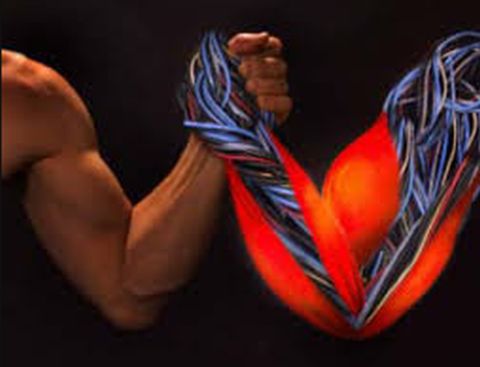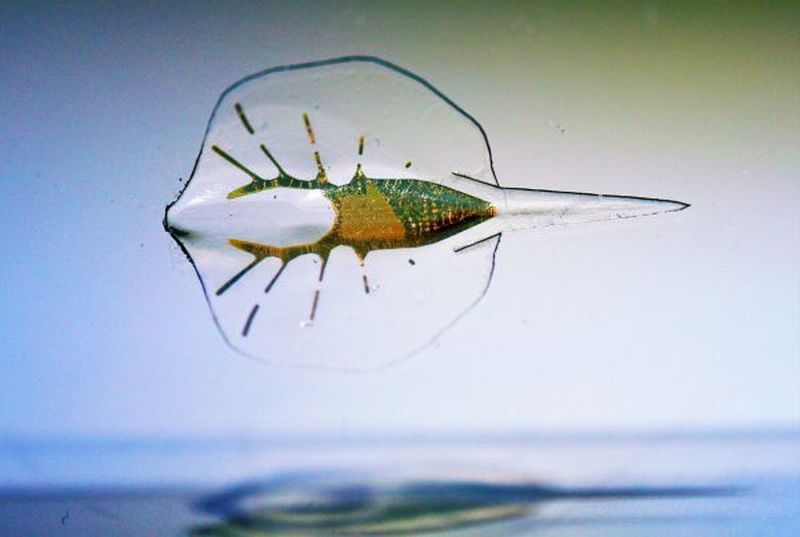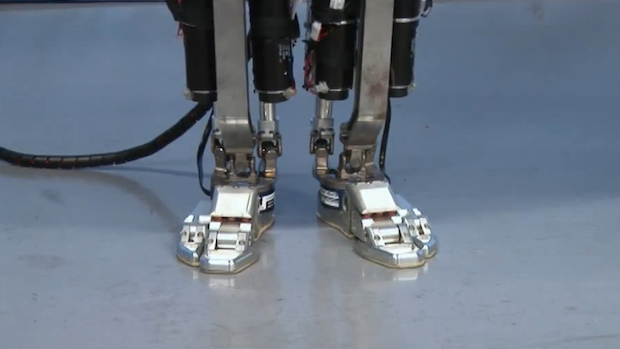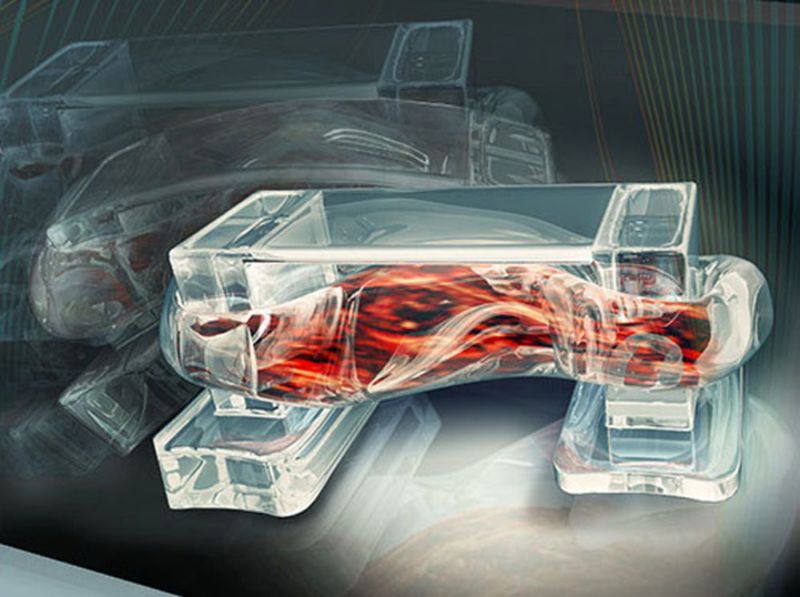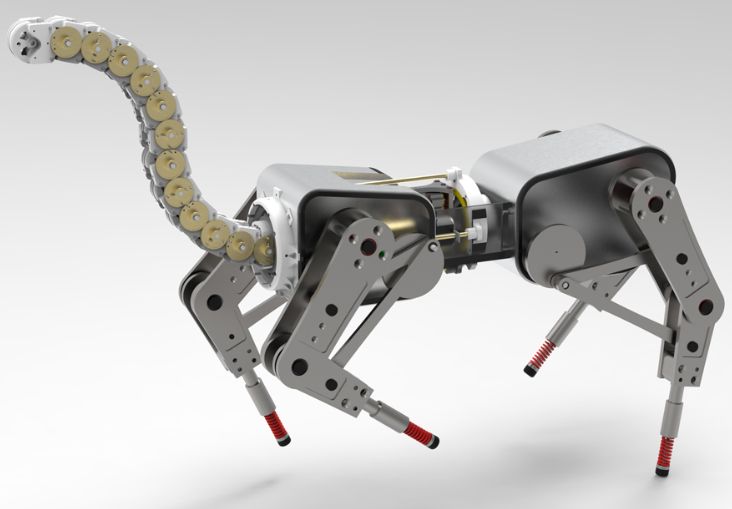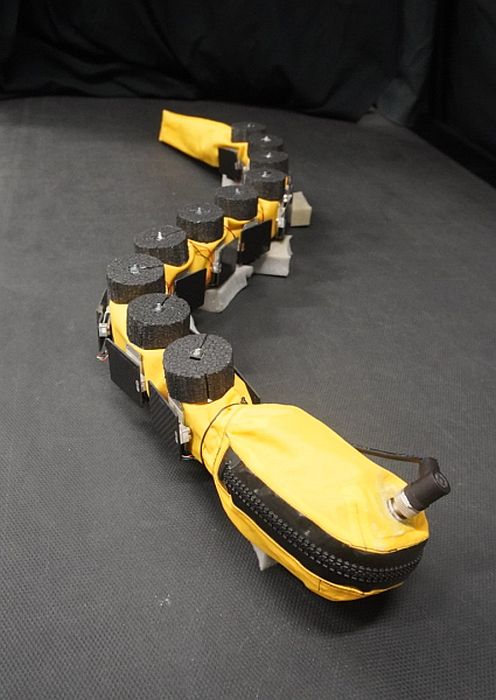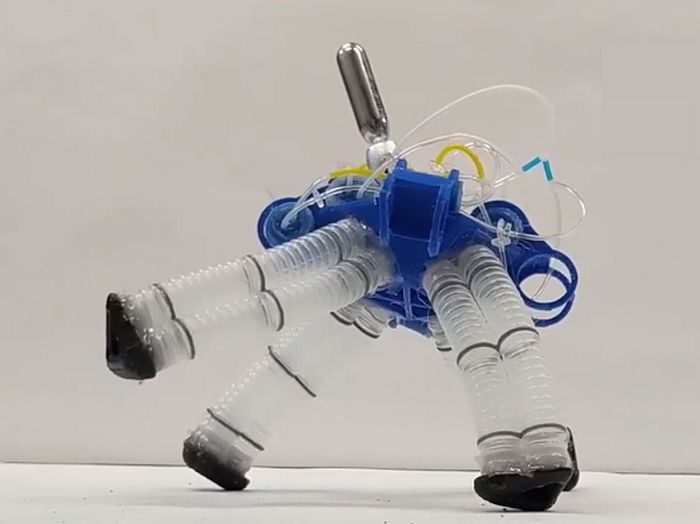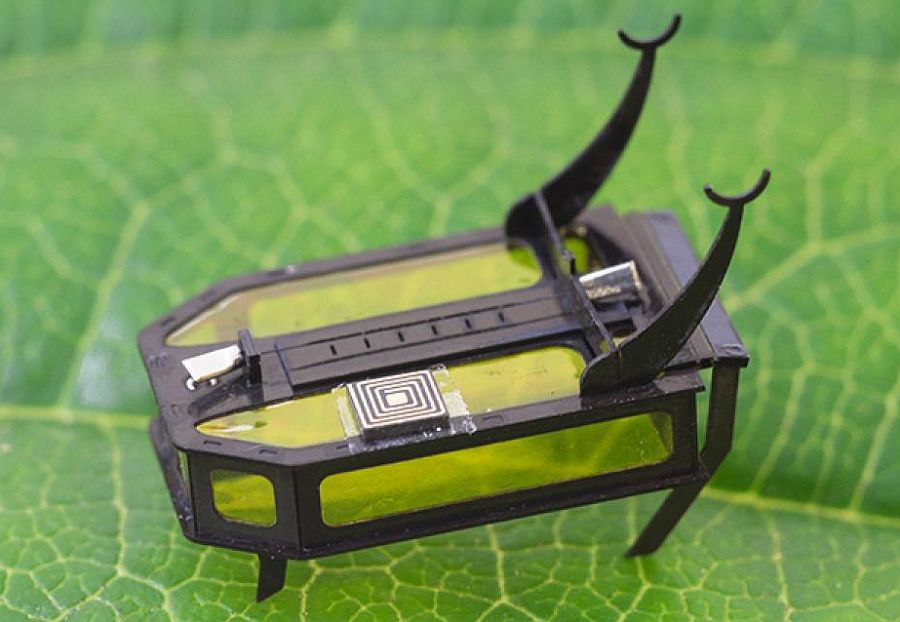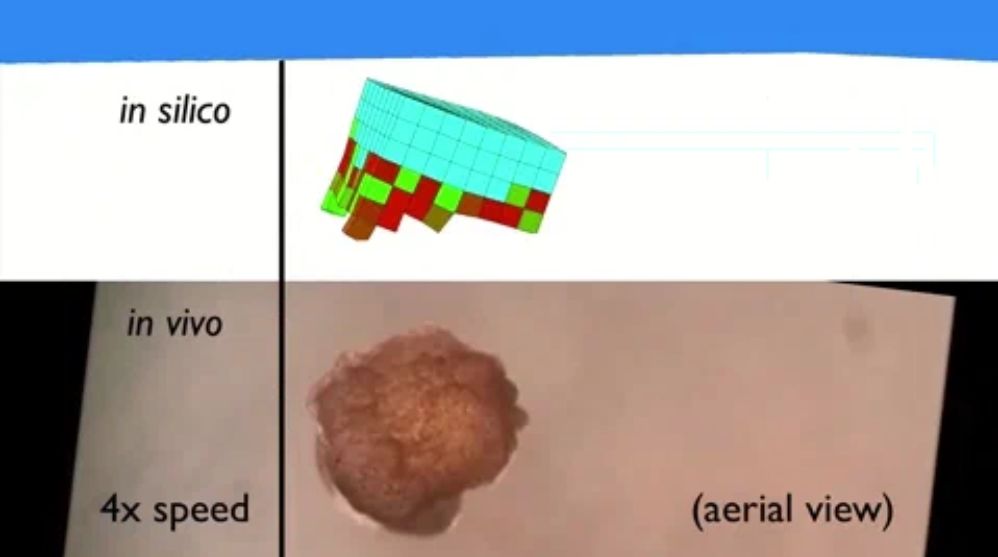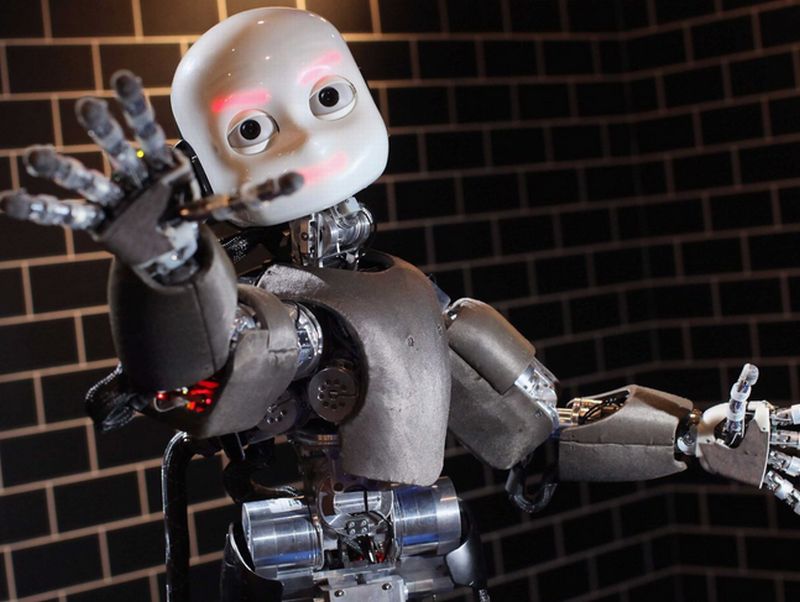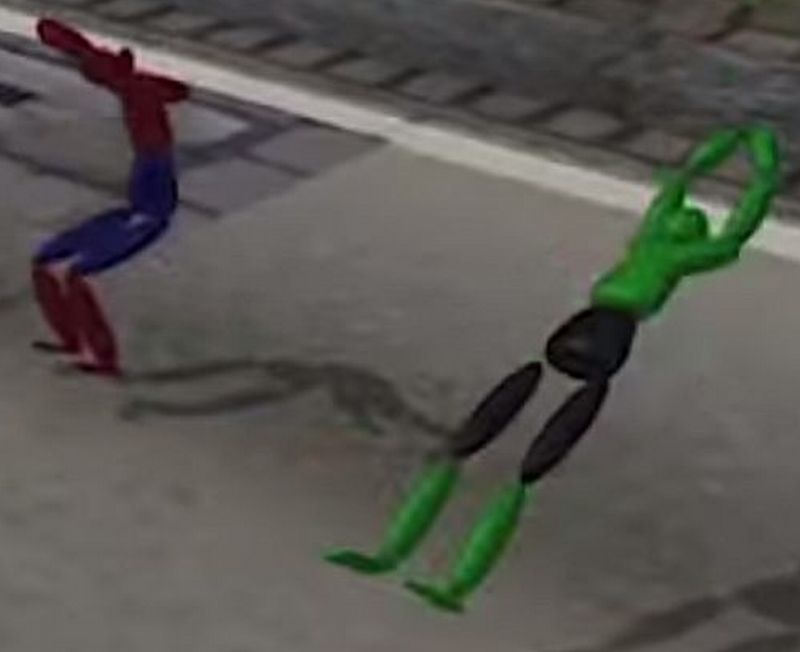An Italian team of researchers lead by Prof. Marco Fontana, in collaboration with the departments of Industrial Engineering of the Universities of Trento and Bologna, have created an Electrostatic Bellow Muscle (EBM) to fabricate efficient small-scale robots. The innovative robotic muscle has potential of powering itself for a long period of time beyond its preliminary charge.
Search Results for: robotic muscle
Muscles Powered Biohybrid Devices: Robotics with Tissue Engineering
Let’s picture the word, “Robot”, immediately, we get a glimpse of self operating machines, with nuts-and-bolts as building blocks. These machines are permeating all sections of our society. Machine human relationship has crossed the realms of science fiction. In fact, machine learning has become one of the most interesting and sought-after science, sprouting artificial intelligence (AI).
Biohybrid Bipedal: Muscle-Powered Two-Legged Robot
Unlike robots, our bodies are super flexible and can make delicate moves effortlessly. Components like muscles, joints, and nerves work in tandem and allow us to make precise and delicate movements with ease. Robots, on the other hand, rely on rigid structures and predefined movements; in contrast, our bodies can adapt and respond dynamically to various situations.
Interview: Dr Dylan Drotman, Robotics Engineer at University of California San Diego
It’s our honor to have Dr Dylan Drotman from University of California San Diego with us today. Dr Drotman’s research interests focus on the design, modeling, fabrication, and actuation of physically soft robots that are powered by air or water. He obtained his B.S., M.S., and Ph.D. in Mechanical Engineering at University of California San Diego. He has also been a Guest Lecturer in Experimental Robotics, Soft Robotics and Computer Aided Design & Analysis.
Skeletal Muscle Cell Powered Bio-Bots: Micro-Bots controlled by an Electric Field
Inspired from living organisms, researchers try to create robots that can simulate living creatures mechanically or chemically. This field of science is named as Biorobotics. A team of researchers at the University of Illinois at Urbana-Campaign has made a miniature walking bio-bots that derive its power from living muscle cells. And their movement can be regulated externally using electrical pulses.
Interview: Dr. Shoji Takeuchi, a Biohybrid Systems Scientist at The University of Tokyo, Japan
Welcome to our chat with Dr. Shoji Takeuchi, a Biohybrid Systems Scientist rocking it at The University of Tokyo. Dr. Takeuchi’s research covers a bunch of cool stuff like Biohybrid Systems, MEMS, Microfluidics, Tissue Engineering, and Artificial Cell Membrane. Basically, he’s all about blending biology and tech to create awesome bio-hybrid systems.
Interview: Dr. Maxwell Miner, Pharmaceutical Scientist at University of Turku, Finland
Dr. Maxwell Miner is a PhD candidate in the drug research doctoral program (DRDP) at the University of Turku working in the Roivainen group. In the realm of scientific exploration, his focus lies in the intricate art of crafting preclinical radiopharmaceuticals, harmonizing their elements to illuminate the hidden nuances of inflammatory diseases and gliomas within the captivating world of animal models.
A Quadruped Robot with Proprioception and a Tail: Biomimicry
Nature has always inspired philosophers, scientists, and researchers alike. When it comes to solve human problems or create innovative products and technologies, studying nature’s designs and processes lead to more sustainable and efficient solutions. Afterall, nature has had millions of years to develop solutions to problems. These solutions have been honed through the process of natural selection. Learning and getting inspired from nature’s solutions, is called biomimicry. Designers, engineers, and scientists are inspired from nature to create more sustainable and efficient products and systems.
Swimming is Dynamics of Two Nervous System: AgnathaX
Starting in the early 1900s, one of the problems that baffled neuroscientists worldwide was the role of central and peripheral nervous systems in swimming locomotion. In other words, how swimming locomotion is generated and how vertebrates synchronize the rhythm that is required for the locomotion.
Interview: Dr. Song Chaoyang, Assistant Professor at Southern University of Science and Technology China
Dr. Song Chaoyang is an Assistant Professor, Southern University of Science and Technology (SUSTech) China. His Bionic Design + Learning Lab conducts research in Bionic Design, Robot Learning and Design Science. His team’s vision is to create advanced robotic systems that are sustainable and intelligent.
Electronics Free Quadrupedal Robot: Pneumatic Efficiency
Researchers at the University of California San Diego have come up with an innovative approach in creating soft bot that is devoid of any electronics. Rather it is an air powered robot. All its controls and locomotion are done with the help of pressurized air.
RoBeetle: Autonomous Crawling Bot Driven By Methanol Combustion
Researchers have long envisioned designing tiny intelligent autonomous machines that are capable of exploring dangerous environments or the areas where tiny bots can work with full efficiency.
Xenobot: AI is Pushing the Best Way to Construct Itself
Scientists at the University of Vermont, have created a new class of artifact, called xenobots. They have used frog’s stem cells to fabricate first living robots.
Pink slips to 90% employees: Robots will take over 30% our jobs by 2025
Experts predict that abilities of robots will expand exponentially and by 2025 smart machines will eclipse one-third of jobs. We are already witnessing some glimpse of the forecast in southern China.
Robots would now Learn to Fall from Cats and Divers: Biomimicry
It’s not just the design but the falling mechanics too are being studied for implementation by researchers in biomimicry. In an attempt to develop natural reflexes in robots, scientists at the US are studying the techniques through which cats and athletes twist their body mid-air without being injured at the landing. By recreating the similar reflexes in droids, researchers aim to cut down the probability of robots crashing especially during hazardous missions like search-and-rescue operations.

